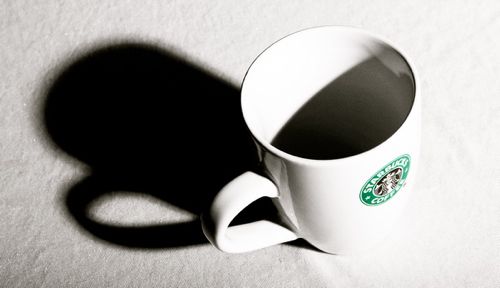La Tierra es Redonda
Un concepto que hoy en día nos parece tan evidente como el de que la Tierra es redonde (o mejor dicho esférica) no siempre ha sido tan evidente. Antiguamente se pensaba que la Tierra era plana y que llegaba un punto en el que el agua de los océanos se derramaba por los lados en forma de gigantes e infinitas cataratas.
La gran pregunta que hay que hacerse es la siguiente ¿Quién fue o quienes fueron los que realmente se atrevieron a decir que la Tierra era plana? Lo que está claro es que las primeras evidencias de una Tierra esférica provienen de la antigua Grecia. Muchos filósofos, científicos e intelectuales de la antigua Grecia han sido en algún momento relacionados con este concepto:
Hay quien dice que el primero que habló sobre este concepto de una Tierra esférica fue el filósofo griego Pitágoras (Siglo VI a.C.) aunque no está muy claro que así fuera. Esto se basa en que este concepto era conocido por dos filósofos de la "escuela pitagórica" como Parménides o Empédocles (Siglo V a.C.).
También se sabe que más tarde otros conocidos filósofos hablaron de este concepto: Platón (427-347 a.C.) enseñaba que la Tierra era una esfera aunque no ofreció ninguna justificación. Así en su obra El Timeo (en torno al año 360 a.C.) se lee que "(El Creador) hizo el mundo en forma de globo, redondo, de por sí la más perfecta de todas las figuras". También Aristóteles (384-322 a.C.) observó que había estrellas que se veían desde un sitio y no desde otro. Por ello consideró la forma esférica de una Tierra de un tamaño no muy grande. Incluso dio una serie de argumentos físicos y basados en observaciones para sustentar esta idea de que la Tierra es esférica.
En fin, el caso es que sólo eran ideas que no fueron demostradas hasta que una expedición consiguió rodear por primera vez nuestro planeta. Realmente no está registrado en ningún lado cómo la esfericidad de la Tierra fue descubierta.
La Luna
La Luna es el único satélite natural alrededor de nuestro planeta Tierra. Gira respecto a la Tierra de forma que siempre muestra la misma cara, en la cual se pueden observar muchos "mares lunares" de origen volcánico entre montañas antiguas.
La Luna es considerado como el quinto satélite más grande del Sistema Solar y después del satélite de Júpiter llamado Ío, es el segundo satélite más denso.
Aunque desde la Tierra la veamos muy luminosa y brillante, en realidad es muy oscura. De hecho tampoco es uno de los astros que mejor reflejen el Sol (tiene una capacidad de reflejar la luz similar a la del carbón).
La influencia gravitacional de la Luna en nuestro planeta Tierra produce las mareas y la distancia tan "escasa" que los separa (en torno a treinta veces el diámetro de la Tierra), hace que se vea en el cielo con el mismo tamaño que el Sol y permite que la Luna cubra exactamente al Sol durante los eclipses solares.
El poder visitar y habitar La Luna siempre ha sido una obsesión del ser humano. De hecho, La Luna es el único cuerpo celeste que los humanos hemos conseguido pisar. Y no fue hasta 1969 cuando la tripulación de la expedición norteamericana del Apolo 11 consiguió pisar suelo lunar. Sin embargo, el primer intento de alcanzar la Luna lo realizó la antigua Unión Soviética con su programa llamado programa Luna y con una nave espacial no tripulada.
Gracias a algunas rocas traídas de esas expediciones a la Luna, se ha podido investigar sobre los posibles orígenes de la Luna (se cree que se formó hace 4500 millones de años después de un gran impacto).

También podemos obtener más información en el siguiente video sobre la Luna: https://www.youtube.com/watch?v=D_15||SUm6Q
Las fases lunares
La Luna como satélite que es, gira alrededor de la Tierra. Este giro dura en torno a 28 días (4 semanas) y durante este trayecto puede presentar diferentes aspectos o formas según sea su posición con respecto al Sol. Cuando la Luna está entre la Tierra y el Sol, tiene orientada hacia la Tierra su cara no iluminada (a esta fase se le llama novilunio o Luna nueva). Una semana más tarde, la Luna ha dado un cuarto de vuelta y presenta media cara iluminada (fase conocida como cuarto creciente). Otra semana más y la Luna ocupa una posición alineada con el Sol y la Tierra, por lo cual desde la Tierra se aprecia toda la cara iluminada ( a esta fase se le conoce como Plenilunio o Luna llena). Una semana más tarde se vuelve a ver media cara iluminada (lo que se conoce como cuarto menguante). Transcurridas unas cuatro semanas estamos otra vez en la fase de novilunio.
Aquí os dejo un video sobre la luna y su rotación:
Y aquí hay otro video que habla sobre las fases de la luna y los eclipses:














































